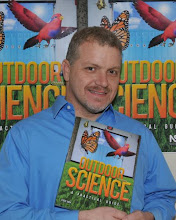
When I was a classroom teacher, I had a captive audience each year for Earth Day. Some years we focused on recycling and other times we planted trees. When my son was young, we often went to special events or festivals or planted something new in the yard. In my own yard and in my school yards, I have gardened for butterflies and caterpillars for 15 years. Whether you have young people to share it with or not, Earth Day is a time not only to take action, but to reflect on the actions you take all year. Here are some ideas to think about:
- What item are you not recycling that you could add to your recycling routine?
- Is there a local school that could use some of the plants that you need to separate and thin?
- What local creek or stream needs someone to organize a clean-up day?
- Which kitchen items are you throwing away that can be composted?
- Are there plants in your garden that provide a habitat or food source for caterpillars and butterflies?
Recently my efforts have been focused on reusing and re-purposing. Before I throw something away, I am thinking about how it can be used again. A simple exercise that I used to have my students do was to keep a plastic bag with them throughout the day. If they wanted to throw something away, they had to put it in the bag they were carrying. It's really an eye opener to realize at the end of the day how much one person puts in the trash.
So as I wish you a happy Earth Day, I ask you to think about the Earth everyday. Take care of it. The next generation that will inhabit it are depending on you and me to leave it in good shape.

